How to Reset Your Brain to Live a Nomadic Lifestyle in 2024

When it comes to starting your nomadic lifestyle, it’s often mind over matter. It may sound cliche but it’s true. We see people all the time who don’t end up making it as a nomad thanks to skewed expectations.
Living a fully nomadic life is a whole different experience than going on a short vacation.
When Paul and I started our journey, we were definitely on a shoe-string-style budget. But, we were determined to make it work and we’re still at it 9+ years later! That’s not to say your journey will be easy. Because trust us, it probably won’t… at least at first.

Before we get into the good parts of living a nomadic lifestyle, let’s touch on some of the things that could be a deal-breaker for many travelers.
What Difficulties Can You Expect with a Nomadic Lifestyle?

As I always say, “Expect the worst, hope for the best.” Living nomadically can be a full-time job of its own. Finding your next destination, planning travel, and booking the next place you’ll lay your head can be super thrilling but occasionally it can be stressful too.
If you’re prepared for the worst case scenario, you’re more likely to enjoy the small wins. I’ll break down a few potential difficulties you might face along with a real-life story that we’ve experienced.
Keep in mind, some of these are more likely than others.
Mother Nature-Related Issues
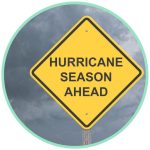
This can be a big one. If you plan to travel on a budget, you’ll likely be in places during “off season”. Rentals are cheaper, plane tickets aren’t as expensive, and you’ll get to enjoy a more local vibe.
But, there’s often a reason places even have an off season. Some of those can include:
- Rain, hail, flooding, or even hurricanes.
- Uncomfortably warm or cold temperatures.
- Seasonal waves, algae, or seaweed (ocean areas).
- Earthquakes, rock slides, and mudslides.
As house and pet sitters, we often find ourselves in locations during off season. We’ve experienced most of the above including more than one hurricane in coastal areas. Mother nature can definitely be scary but if you know what to expect, you can prepare for the worst.
One year, we were all set for an impending hurricane. Stocked up on candles, prepared for power outages, pulled all the furniture inside, and had plenty of food and games to keep us busy.
But, you can’t plan for everything! As we took the dogs out one last time for a pre-hurricane potty break, our neighbor’s dog (whom we were caring for) got into the compost pile behind the house. That left us locked in a 500-square foot area with two dogs – one of which with rotten-egg gas. It was a long 8-hours to say the least.
Sometimes all you can do is laugh at a situation. And we definitely did that time.
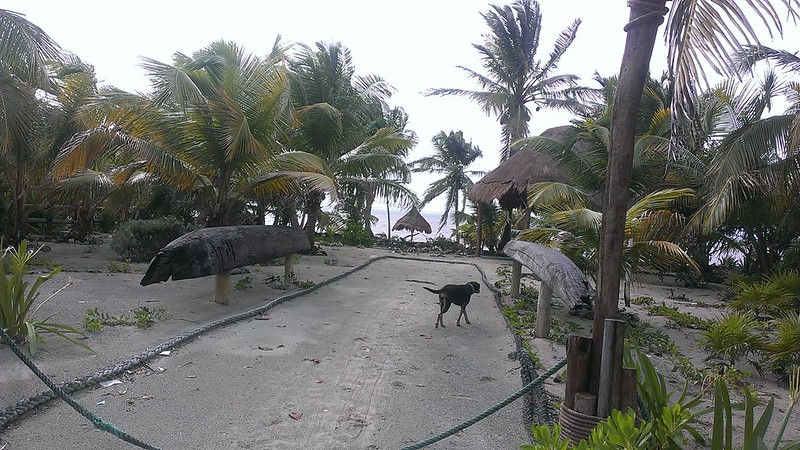
Bugs, Bugs, and More Bugs

Yes, there are bugs everywhere but in Mexico, Central, and South America, it seems like they’re all out to get you. We’ve seen some crazy-looking bugs throughout our travels. There’s also what we call “the bug of the week” – as it seems they go just as fast as they came.
Some bug-related situations you can expect:
- Ants in the kitchen – we keep everything in the fridge!
- Mosquitoes at dusk and dawn – especially during rainy season.
- Large wall-hugging spiders – they’re harmless and eat mosquitoes!
- Biting flies – these guys are terrible but often only stick around a week.
- Roaches happen – especially on the ground floor.
- Scorpions – scary and painful but not the end of the world.
There are lots of cool bugs too. Praying mantis, butterflies, and fireflies. Some are harmless, some not. If you want to be really freaked out, spend a minute Googling “40-legs in Jamaica”. Speaking of bugs and our time in Jamaica…
One late afternoon, we decided to go for a walk and got caught in the rain. We decided to wait it out with a few beers. It ended up being dark before we could walk the 30-minutes up a muddy dirt road to our mountain cabin. The night air was fresh and the stars lit our path just enough to barely see. That was fine with us. Until…
We saw the bright red streak of a cigar move through the woods along the path about 10-yards behind us. There wasn’t supposed to be another soul around for miles so we got a little nervous and started walking faster. After another minute, we saw the same flash of red streak across the middle of the road just in front of us.
Now, we were super freaked out that someone was following us with malice intent. We ran the next 5-minutes home, jumped the fence, and slammed the door of our secluded cabin. Minutes later, a firefly landed on our window and lit the room aglow with a bright red color that made us facepalm with relief and giggles.
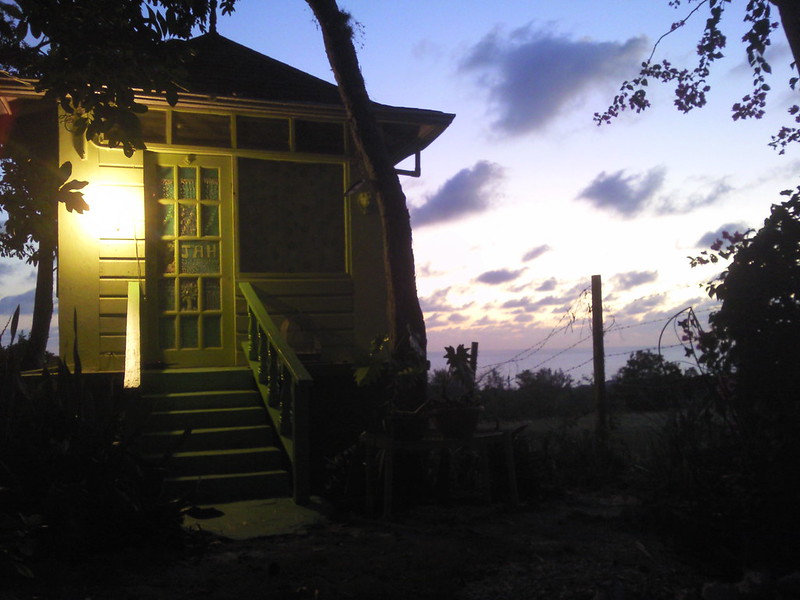
Lost or Stolen Items

Hey. It happens. However, in our travels, I will say that we’ve lost a lot more things than were stolen from us. I’ll also say that crime happens everywhere. Don’t avoid travel just because you’re worried about lost or stolen items. In most cases, locals will do everything to protect tourists from the bad seeds giving them a bad name.
Here are a few things that can easily happen when traveling:
- Leaving a phone, wallet, etc in a taxi or bus – always double check.
- An ATM decides to eat your credit card – we recommend having extras!
- Getting pickpocketed – primarily in touristy areas.
- Crimes of convenience – something goes missing when left too close to an open window, etc.
Don’t carry a ton of cash (take just what you need for the planned outing), leave expensive jewelry at home, and be aware of your surroundings. That’s all it takes to protect yourself in most cases.
In our 9+ years of travel, we’ve only been successfully pickpocketed once. We were walking down one of the busiest tourist hub streets in Bogota, Colombia. It was the typical story of me taking photos, someone seeing exactly where I put my camera in my bag, and us not paying close enough attention.
I knew the second it happened but it was so incredibly fast, we never caught the person. A group of 3 people (presumably mom, dad, and teen) were walking ahead of us and stopped short. Of course, we were also forced to stop short and at that second someone bumped into my shoulder and as I turned around my camera was gone for good. As was the family and the people who were behind us.
Again, that was the only pickpocket we have ever experienced and often find crimes of convenience much more common – although we rarely have had a problem with that either.
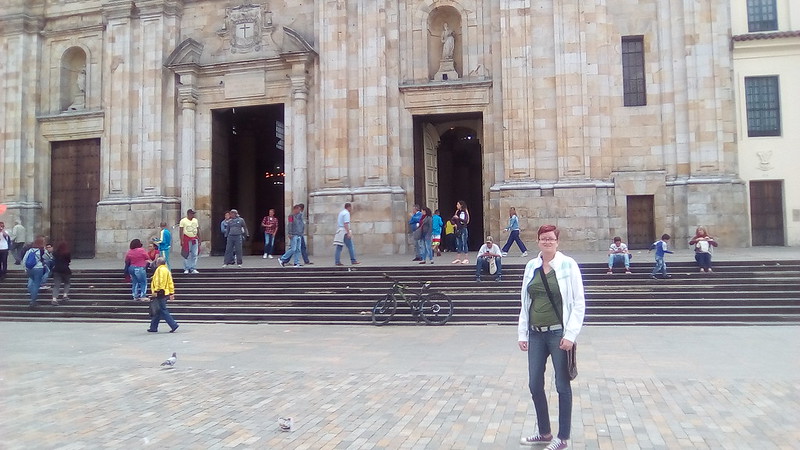
Travel-Related Difficulties

Even when you have all your ducks in a row things can easily go awry. Often combined with a language barrier, travel-related difficulties can be super stressful. We pretty much just assume something will go wrong, and when it doesn’t we’re often surprised.
While many of these aren’t preventable, you can get yourself in the right mindset. These things happen to everyone, and it’s all just part of the journey:
- Canceled flights – it happens all the time.
- Connection or timing issues resulting in long waits.
- Missing your stop on a bus or collectivo.
- Getting sea or carsick – have bags and dramamine at the ready!
- Not getting the number of days you want stamped on your passport.
- Getting lost is almost a given – Google Maps is your friend!
We’ve been on buses for 14+ hours, gotten stuck in “no man’s land” after being denied visas, and crossed more borders than we’d like to recall. Entering a new country by plane is a whole different animal than entering a country by vehicle. On foot, it is even more tricky.
We learned just that when we decided to go from Costa Rica to Panama. We were a short 2-hour drive from the border. We hopped a taxi and crossed the foot-bridge into Panama. We waited in full-sun with all our bags, in line with about 1,000 other people doing exactly the same. It was brutal.
About 3-hours after crossing the border by foot, we were in front of an immigration officer. He denied us entry and led us to a room away from everyone else. We were confused and didn’t speak any Spanish at that point. Thankfully, there was a somewhat-friendly officer that explained to us that we needed proof that we were leaving the country before we could actually enter it.
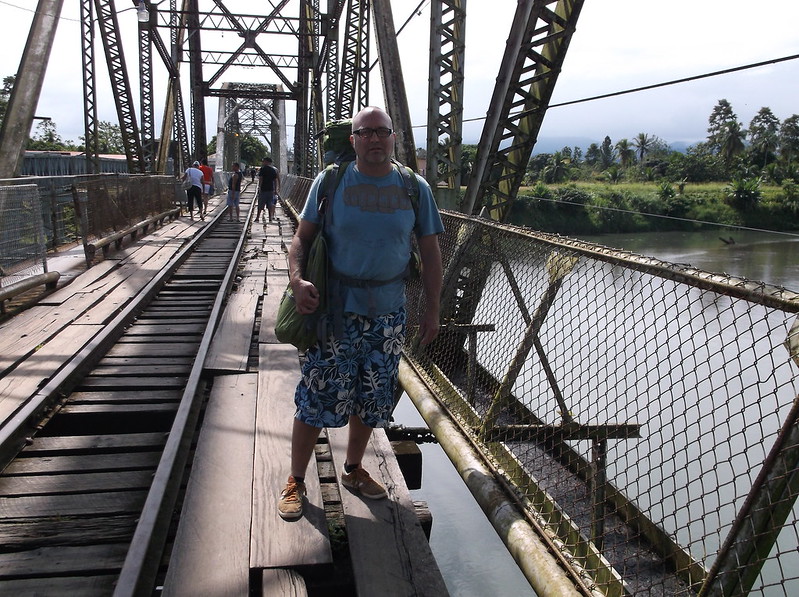
Well, we didn’t have that! SO, we were stuck in no man’s land – technically not in Costa Rica or Panama but somewhere in between. We couldn’t go back to Costa Rica because we were already stamped out and you can legally only stay 90-days at a time. As we were standing there trying to figure out what to do, a guy came up to us to help – for a tip of course.
He led us to an internet cafe woven somewhere in the streets of the shantytown that was between the borders. We were able to buy plane tickets out of the country for later that month and print them out. Unfortunately, we hadn’t exchanged money yet. So our “helpful” friend figured that out for us too – for yet another tip.
We finally had everything we needed and were able to cut the line and meet with the border officer we’d been dealing with. He approved our visa, stamped our passport, and sent us on our way. Of course, we missed our connecting bus and had to wait an extra 6-hours in the hot sun but we didn’t care. We were legally in Panama!

The Accommodations Aren’t What You Expected

There will likely be issues with any place you decide to lay your head – even if you’re not on a budget. While there can be some negatives, there are also many, many positives to living like a local. Go with the flow and don’t sweat the small stuff, and you’ll enjoy life in your new place just fine!
Conversely, if you’re expecting the same 5-star accommodations that you had on your vacation, you’re going to be sorely disappointed. For example, we’ve heard folks complain about not being able to nap because there was construction going on next to their all-inclusive resort.
A few common issues that can arise when you book a place abroad include:
- Construction is typical in tourist areas 6-days a week.
- Low water pressure can be a relatively common issue.
- Regular internet outages and/or installation problems.
- Noisy neighbors – especially on the weekends or holidays.
Aside from the above, sometimes the listing just isn’t accurate. We’ve stayed at plenty of places where it wasn’t quite what we expected. Either it wasn’t clean or the location wasn’t ideal. There was one place though that when we arrived, we had to decide if we were going to be able to make it work.
We’d booked a place online for a month in a town in Belize we’d never been to before. The house was right on the beach and looked like a dream place – especially for the price. Well when we arrived, we figured out the reason for such low-cost accommodation.
Now, we’d stayed in some “interesting” places before then, but this one topped the cake. At first glance, we saw that the place was completely dilapidated. The owner told us that the rooftop palapa was torn down in the “recent” storm 2-years before. We found it odd, but whatever.
We got the bags into our room, and decided to look around the property. We literally had to run to the detached kitchen to avoid the swarms of mosquitoes. Once in the kitchen, we were shocked at the uncleanliness – dirty dishes were piled everywhere and the bugs were not shy about helping themselves.
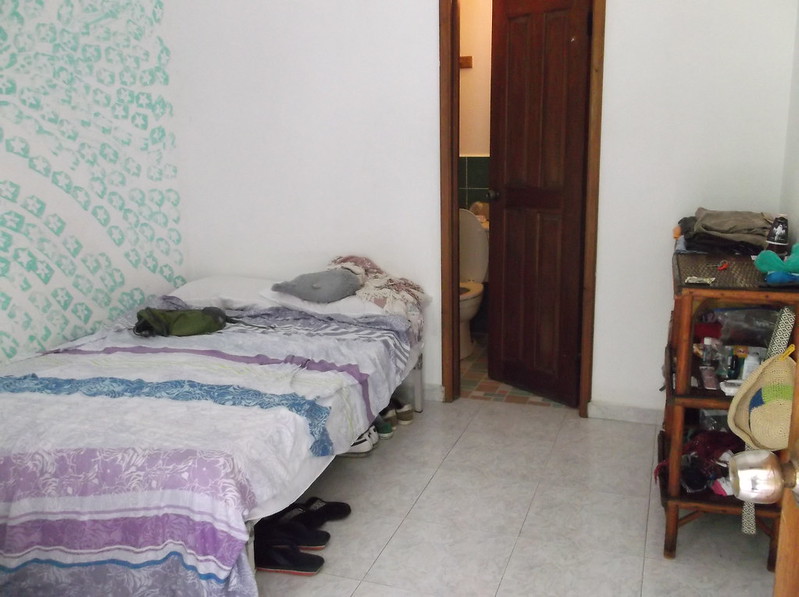
We decided to make it work. We’d eat out rather than cooking, and keep to ourselves for our month-long stint at a house right on the beach. We opted to check out the view from the roof even though the palapa wasn’t there to protect us from the sun. It was a disaster. Aside from the carnage from the storm 2-years before, there was about a foot of standing water along 70% of the roof – clearly where all the skeeters were coming from.
Thankfully, the owner of the property who lived on-site decided since we were there to “watch the place”, it was a good time for her to take her son on vacation in the next town over. So, we ended up having the whole place to ourselves, got things cleaned up, and made it work for a month before high-tailing it out of there.
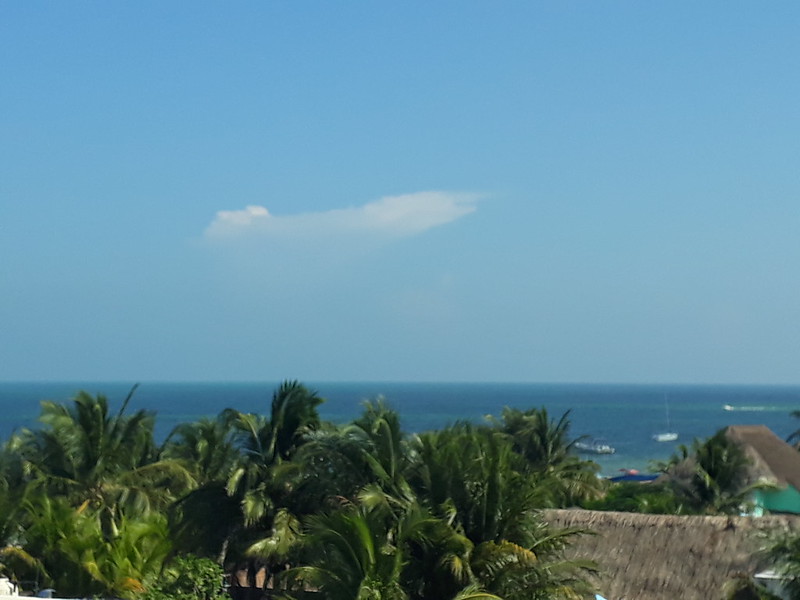
The Location Just Isn’t for You

It happens more often than you think. We’ve gotten to a town or country and instantly found that it didn’t vibe for us. Sometimes, a place will grow on you, and sometimes the location just isn’t for you.
Even if you decide you love a place during a vacation, it might not be for you long-term. That’s why we always recommend renting at least several months before deciding to settle down for good.
It takes time to find your Goldilocks location. Some things to consider when choosing a place to stay include:
- Weather and seasons
- Beach, mountains, jungle, etc.
- Expat community
- Size and walkability
- Overall safety
- Proximity to amenities
- Cost of living
Although we’ve found a ton of great places, we just aren’t ready to settle down quite yet. After 9+ years of travel, we’ve certainly slowed down a bit. We tend to prefer “slow travel” staying in places for anywhere from 1-3 months. This allows us to get a real feel for the local flavor of a place. That is… until we get itchy feet again.
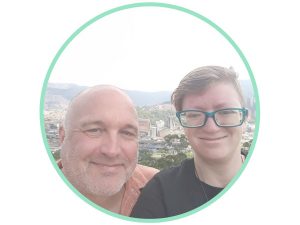
Sounds Crazy! Is It All Worth It?
In our opinion, the difficulties that come with learning to live abroad are 100% worth it compared to living the rat race we once were. We see each other more than most couples and get to enjoy each other’s company in some pretty amazing places.

What are Some Benefits of Living Nomadically?

Living a nomadic lifestyle is a lot different than what you’re probably used to. It can be difficult but equally rewarding as well. You’ll have more time to slow down and enjoy the finer things in life with minimal stressors compared to a traditional rat-race lifestyle we’re all accustomed to.
If you’re still with us, great! That means, you’re at least willing to give the nomad life a go. Now, let’s take a look at the good side of becoming nomadic AF.
Simplify Your Life

Less is more. We’re not talking about money here… although we’ll get to that in a bit. Rather we’re talking about stuff. You’ll find yourself not needing the things you once did. For example, transportation is usually a fraction of the cost. You won’t necessarily need a car to get around.
You also don’t need to worry as much about dates, and schedules as much as you would with a regular 9-5 routine. We haven’t set our alarm clock in years.
With a nomadic lifestyle, you can say goodbye to things like:
- Waiting in rush hour traffic.
- Following a set schedule.
- Only having weekends off.
- Worrying about household chores.
- Stressing about the Monday’s.
- Feeling exhausted at the end of the day.
Our lives have dramatically changed for the better since we opted for a nomadic lifestyle. We wake up when we want, make our own schedule, grab a bite to eat when we’re hungry, and rarely do things we don’t want to do.
On average my day looks like this:
- Wake up when we want.
- Have coffee and play Scrabble.
- Grab a bite to eat.
- Work for a few hours.
- Take a nap.
- Work a little more or take a half day.
- Cook or go out to eat.
- Have a beer.
- Hang out, and repeat.
We occasionally mix it up and “play tourist”. Maybe we’ll hit a museum or decide to catch a soccer game at the local stadium. Otherwise, you might find our regular routine pretty boring – and that’s fine with us!

Immerse Yourself with Food & Culture

Eating out is cheap, easy, and oh-so-delicious. Just look for a line of locals and grab a spot behind them. While we love to cook, we find ourselves eating out more often than not. Sometimes it’s actually less expensive to grab a bite to eat at a restaurant than it is to make it yourself and deal with everything that goes along with it.
Shopping is entirely different in Mexico, Central, and South America too. Rather than doing a big grocery shop at a chain store, we opt to shop daily per meal like the locals do. It’s so easy to go to the market and get exactly what you need – at peak freshness.
And the people are so nice too! We typically have a:
- Fruit & Veggie Vendor
- Cheese Stall
- Chicken Vendor
- Beef & Pork Butcher
- Dry Goods Shop
- Juice Shop
- & Fresh Flower Lady
One of our favorite things to do when we get to a new place is visit a local grocery store and/or markets. It’s so enjoyable to immerse ourselves with fresh, local produce and products. Plus, if you’re hungry on the spot, you can stop for a quick bite to eat at one of the many restaurant stalls found within the market.
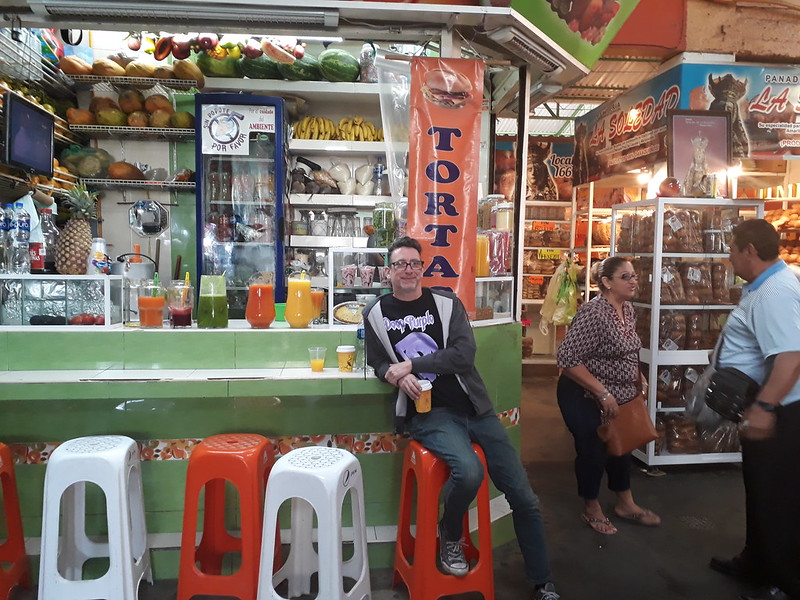
Your Dollar Goes A Whole Lot Further

It’s true. When it comes to food, rentals, and even utilities, things are often much cheaper abroad. Of course, it depends on the area you’re in and the lifestyle you lead. If you’re hitting all the tourist traps on a regular basis, you can expect to pay about the same as you would in Canada or the States.
But, if you live like a local, or at least eat like one, you can expect to stretch your dollar to the max. It’s not uncommon for most expats or nomads to regularly have:
- Weekly Cleaning Person – Depending on the size of your home, you’ll probably pay around $10-20 USD per weekly cleaning.
- A Laundry Drop Off – Most lavandarias allow you to drop clothes off and pick them up the same day (or next) for just 12 pesos per kilo. We typically pay around $4-5 USD per week for laundry services.
- Massages & Spa Treatments – This is definitely a splurge for me in the states. Here, I get regular 90-minute massages for about $25 USD.
- Manicures & Pedicures – Again, in the states I’d never spend the money to get monthly mani/pedis like I do here. You can expect to pay around $30 USD for both combined.
- Nanny and/or Childcare – Many expats choose to have more time to themselves and hire a nanny during the day. These nanny’s cost about $5 USD an hour and spend lots of one-on-one time with your kids.
- Car Service – I don’t know anyone that doesn’t have a specific person they’ll text when they need to go somewhere. Our driver will take me to do a few errands and wait while I bop around from place to place for $7 USD an hour.
We certainly couldn’t have all of that living in the states. I remember making a quick trip to the states and being shocked at the prices. There’s certainly no way I’d pay $4 USD for a taco, much less a beer!
Living in Mexico, Central, or South America is a fraction of the cost. The average price for a domestic beer is around $1-2 USD – depending on the type of place you’re in. And it tastes oh-so-much better with your toes in the sand!
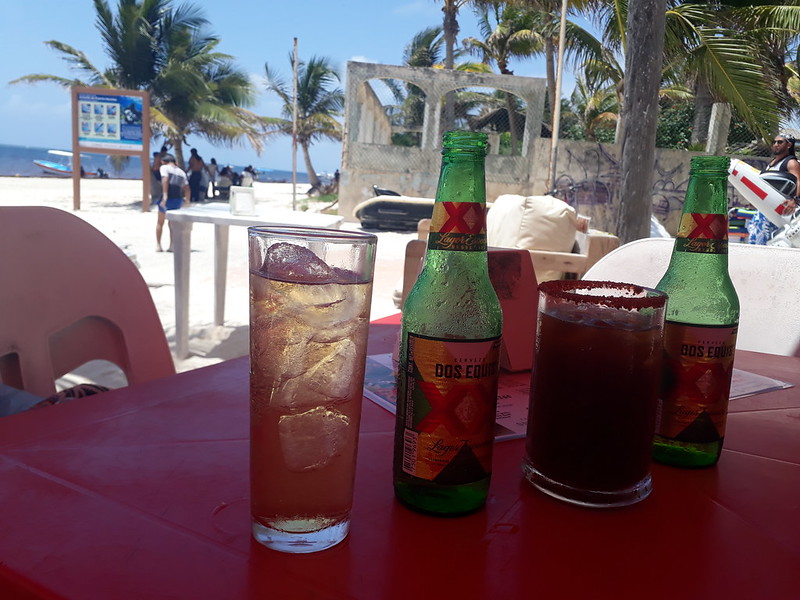
You Can Make Your Own Schedule

While this isn’t true for all digital nomads, it is for most. Feel like taking the day off to do a walking tour? Done. Want to take a few hours before getting started? Head to the beach for a quick swim, grab a coffee at your favorite cafe, or read a book at the park. The world is your oyster!
We tend to adapt our schedule to the location we’re in. For example, if it’s too hot in the afternoon to get out and about, we’ll work then. Or, if we’re planning a weekend getaway, we might spend 3-4 days getting everything out of the way beforehand. Our work day/week varies depending on our mood too!
Planning to become nomadic after you’ve retired? Maybe you’re an empty-nester that wants to start the next chapter of your life? Or perhaps, you’re just tired of living the 9-5 rat race? There’s no wrong reason to become nomadic AF!
Just be aware! You’ll have more free time than you’ll know what to do with. But, there are plenty of things you can do to keep yourself busy. Here’s just a few:
- Pick up a new hobby (yoga, art classes, paddleboarding, etc).
- Explore nearby towns and areas.
- Volunteer to walk dogs at a rescue.
- Practice a new language.
- Learn to cook like a local.
There’s absolutely no shortage of things to occupy your time when you’re living a nomadic lifestyle. And if there is, maybe it’s time to head to the next location!
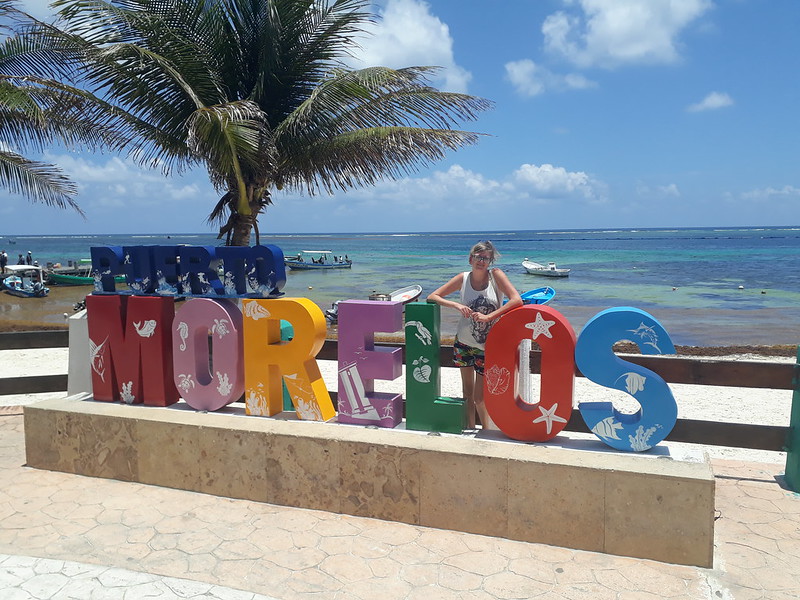
5 Tips to Get Yourself in the Right Mindset for a Nomad Lifestyle
The truth is, living a nomadic lifestyle isn’t always easy. And getting yourself in the right mindset for full-time travel can be difficult for some. Understanding that things can and WILL go wrong is all part of the journey. Once you embrace that, you’re golden!

There are some things that you can do to maximize your chances of making it work. Let’s take a look at our top 10 tips you can start doing before traveling to get your head in the right place for nomad life. Most of these you can start today!
#1: Don’t Sweat the Small Stuff

As a nomad, if something can go wrong, it often does! That means, you’ll need to be able to roll with the punches. Hit the reset button and figure it out as you go. Starting to be more flexible in your normal day-to-day routine BEFORE you travel will go a long way towards improving your odds of being a successful nomad.
A great way to improve your cognitive flexibility is to be more spontaneous. Here are a few ways you can retrain your brain to not sweat the small stuff:
- Add new activities to your schedule.
- Take a day off for no reason.
- Treat yourself, just because.
- Act on spur-of-the-moment ideas.
- Break household routines.
You can’t prevent bad things from happening every once in a while. What you can do is reset your brain to adapt and conquer. And remember, the good things in life wouldn’t be as good if there wasn’t a little bad in there too. You got this!
#2: Start A Travel Fund

We’re not talking about saving for your entire trip here. We’re talking about a fun fund. Remember when we talked about how your dollar will go so much further once you’re abroad? Well, keep that in mind before you buy that winter coat and stick to window shopping.
Add a piggy bank somewhere you’ll see it regularly and add coins here and there. Hell, add a few dollars too! Wouldn’t you rather:
- Have 4 beers with your toes in the sand than 1 at your local dive bar in the States?
- Enjoy a sunrise paddle boarding class more than that latte?
- Get 3 swimsuits for the same price as 1 in a department store?
- Soak up a relaxing massage instead of a takeout pizza at home?
- Go horseback riding along a cenote rather than buying a new gadget?
Commit to using your fun fund for, well, fun! Every penny saved will go towards enjoying life to the fullest. Just $150 USD will get you all five of the above scenarios. Think about what $500 could get you once you’re living a fully nomadic lifestyle!
#3: Set Goals for Yourself

There are tons of things that you’ll need to organize and schedule before you start your newly nomadic life. In fact, it can be downright overwhelming. Setting goals for yourself can help you maintain a healthy and realistic mindset.
Even checking off small boxes can be a big win for your brain! Write a list of realistic to-do goals and scratch them off as you go along. Here’s a few things to consider putting on your pre-travel list:
- Research and pick your first destination.
- Buy plane tickets.
- Book a hotel for a week or two.
- Research cost of living.
- Learn some of the language.
- Cancel contracts.
- Research dollar conversion rate.
Don’t set unrealistic goals. Yes, there’s a ton to do and it’ll get done… or it won’t. Your list of goals are just that – goals. This should be a fun project to help you get excited about travel, not stressed. Tasks like “sell the house” should go somewhere else.
#4: Get Rid of Things

Getting rid of things is one of the best ways to put yourself in the right mindset for long-term travel. Sell what you can, and donate the rest. Purge yourself of unwanted items or those that you won’t be using in your future travels.
Traveling with things is harder than you’d imagine. Do your best to get rid of what you can to enjoy your newly nomadic lifestyle to the fullest.
It can be difficult to say goodbye to your favorite things, and start entirely fresh. Thinking about putting stuff in storage? Maybe you want to bring it with you? Ask yourself, “Why?”.
- If it has sentimental value and you truly can’t bring yourself to get rid of something, give it to a friend for safe-keeping. If it’s a small item that you can’t part with, go ahead and bring it along – just be aware of how many “small things” you’re packing.
- If you plan to use it again one day, consider what you’ll have to do with it if you don’t. You may have to go back at a later date just to sell it then.
- If you think you can’t get it abroad, you may be surprised to learn that most things can be acquired once you arrive in your new destination.
- If you want to take it with you, we get it. The comforts of home are great. But that leather sofa isn’t going to feel as nice when you’re roasting away in your beachside condo.
We’ve met so many people that regretted the things they either unnecessarily saved or brought along with them. Consider that selling or donating items may be more of an asset to someone else rather than sitting in a storage unit never to be seen again.
#5: Learn A Language

A great way to get yourself in the right mindset for a fully nomadic lifestyle is to learn a new language. Even adding a few words to your vocabulary can go a long way towards making your travels more enjoyable. That’s because:
- Locals appreciate it when you try.
- You’ll meet more friends.
- You can order a taco and a beer when you arrive.
- You will get better deals on items.
- Travel days are a whole lot easier.
It’s great for you too. Learning a language (even a little) can be super empowering. For example, when we first moved to Costa Rica 9+ years ago, I was intimidated to even go into a store. Now, my Spanish is by no means great, but I can hold a general conversation.
Your Nomadic Lifestyle is Just Around the Corner!
Living a nomadic lifestyle is well worth the difficulties that come along with it. There’s no right or wrong way to being nomadic AF. Some folks opt to go, go, go until they find their perfect place. Others prefer to immerse themselves within the local community. Whichever you choose, with the right mindset, you got this!

Do you have any tips on how to get in the right headspace for long-term travel? If so, we’d love to hear how you got in the right mindset for living a nomadic lifestyle in the comments below!
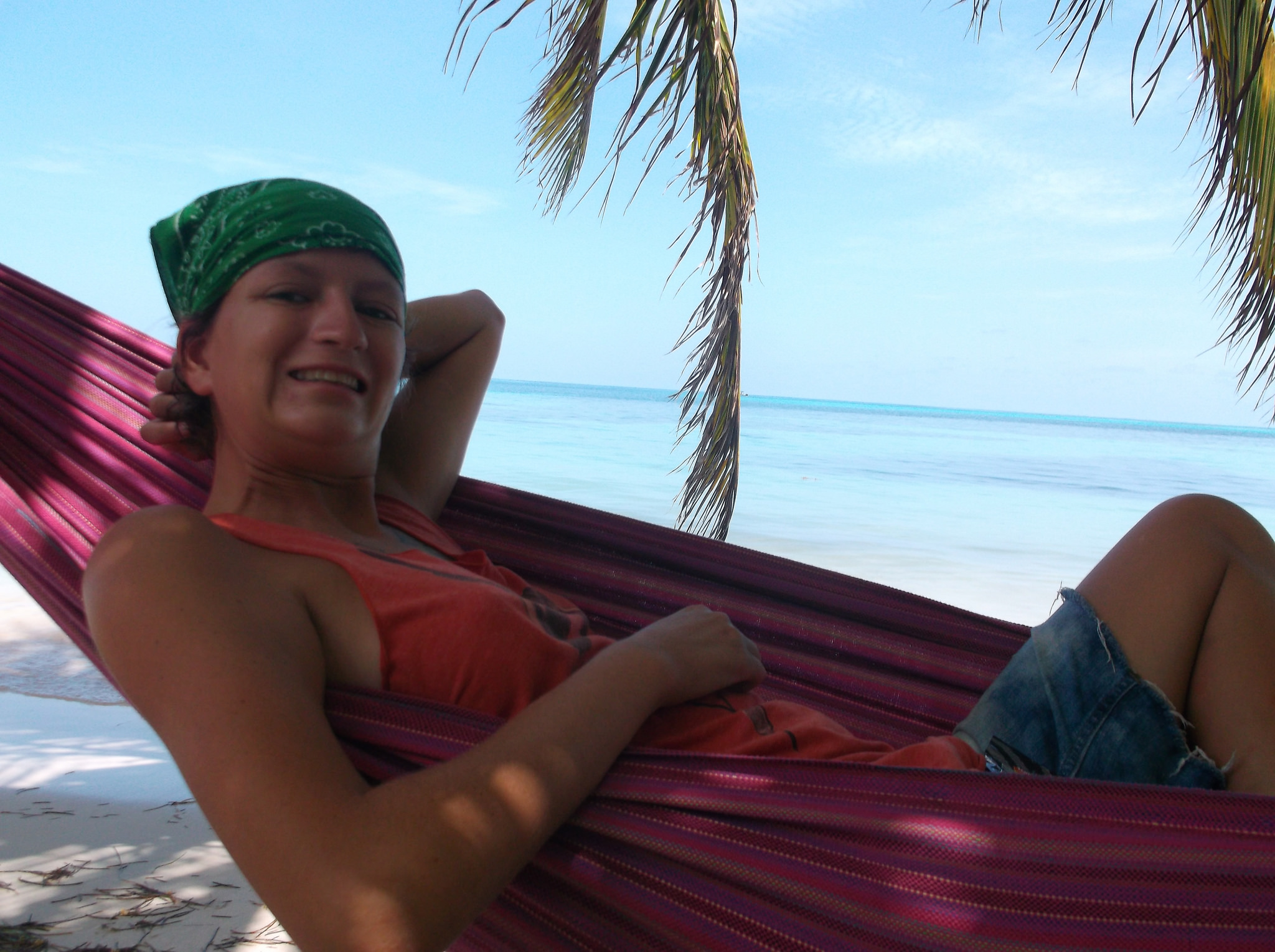
Natasha Moore is a professional SEO content writer and owner of Word Brokers, LLC. She enjoys traveling, hanging out with pups of all sorts, and reading the biggest books she can find. She’s also a full-time digital nomad, and you can find her writing content from the beach in Mexico, a corner coffee shop in Colombia, or lounging by the lake in Guatemala.


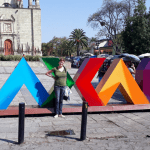

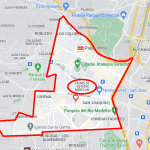
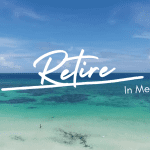
5 Replies to “How to Reset Your Brain to Live a Nomadic Lifestyle in 2024”